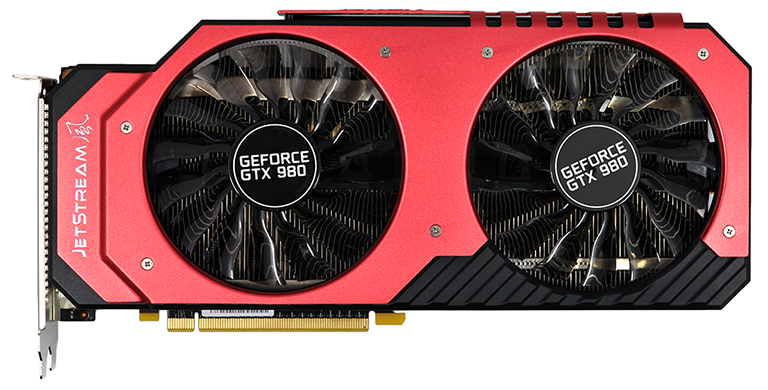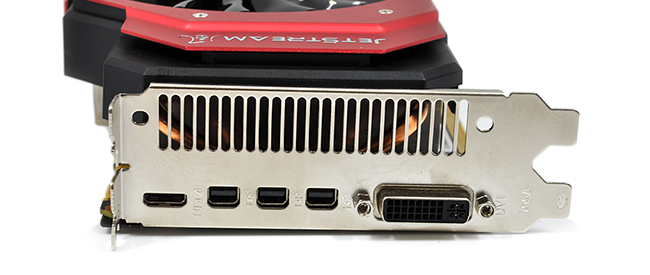Introduction
Which is the best graphics card on the market today? As you might imagine, opinions vary depending on who you ask, but if it's a single-GPU solution you're after and money is no obstacle, few would argue against the GeForce GTX 980. For PC gaming enthusiasts, Nvidia's high-end GPU is rightly considered king of the hill.
The question for said enthusiasts, then, is not should I buy a GeForce GTX 980, but rather, which GeForce GTX 980 should I buy? HEXUS has already examined offerings from the likes of Gigabyte, Asus, MSI and Galax, and today we turn our attention to one of the other big-name vendors, Palit, who presents the GeForce GTX 980 Super JetStream.
Available for £450 and positioned as Palit's very best SKU, the Super JetStream is a giant of a card. Like the high-end Asus and MSI designs, Palit's is comfortably taller than reference and measures 280mm in length. That much is to be expected, but it's worth noting that the JetStream cooler also juts out wider than a typical dual-slot design. Put a couple of these together and there won't be a lot of room between cards.
The chunky cooling solution allows for two white-LED 90mm fans to sit atop the elaborate concoction of aluminium fins and copper heatpipes. The JetStream cooler has worked well in the past, so we've no reason to doubt it here, and we like the fact that Palit is keeping up with the Joneses by including 0dB fan technology. This means that the fans won't spin at all until core temperature reaches 65ºC, resulting in silent operation at low load.
Now what about clock speeds? Well, Palit has launched a trio of GTX 980 models. The firm offers a basic £430 card that ships with a reference cooler and standard Nvidia core frequencies of 1,127MHz base and 1,216MHz boost, while memory operates at the default 7,012MHz. Pay a small premium and you can opt for the £440 JetStream, which sees the above-pictured cooler allied to the same reference speeds.
Push the budget to £450 and the Super JetStream comes into play. This range-topper raises base clock to 1,203MHz and boost clock to 1,304MHz. Not the quickest we've seen, but Palit does go a step further by ramping-up memory to an effective 7,200MHz. That's only a 2.7 per cent increase, however it's a key point of differentiation as the Super JetStream is the first card we've seen that ships with a factory overclocked frame buffer.
The Super JetStream's overall look and feel isn't quite up to the standards set by Asus, we reckon, but build quality is decent, the red-and-black colour scheme will suit most gaming-orientated builds and we like the fact that Palit includes a backplate as standard.
Dual SLI fingers are available for multi-GPU configurations, and power is sourced from six- and eight-pin connectors. Little has changed in those areas, however there has been a bit of jiggery-pokery in the output department. Palit keeps the five default ports - DVI, HDMI and three DisplayPort - but the latter quartet have all been downsized to mini connectors. This configuration does aid the cooler - the upper half of the I/O panel is dedicated entirely to ventilation - but if you decide to attach up to four concurrent displays, mini-to-full adapters are likely to be required and there aren't any included in the box.
We'd have preferred standard-sized outputs, if we're honest, but that's the only niggling issue with the Super JetStream package. Let's now take a look at performance and see if the factory overclocked memory makes a difference.













